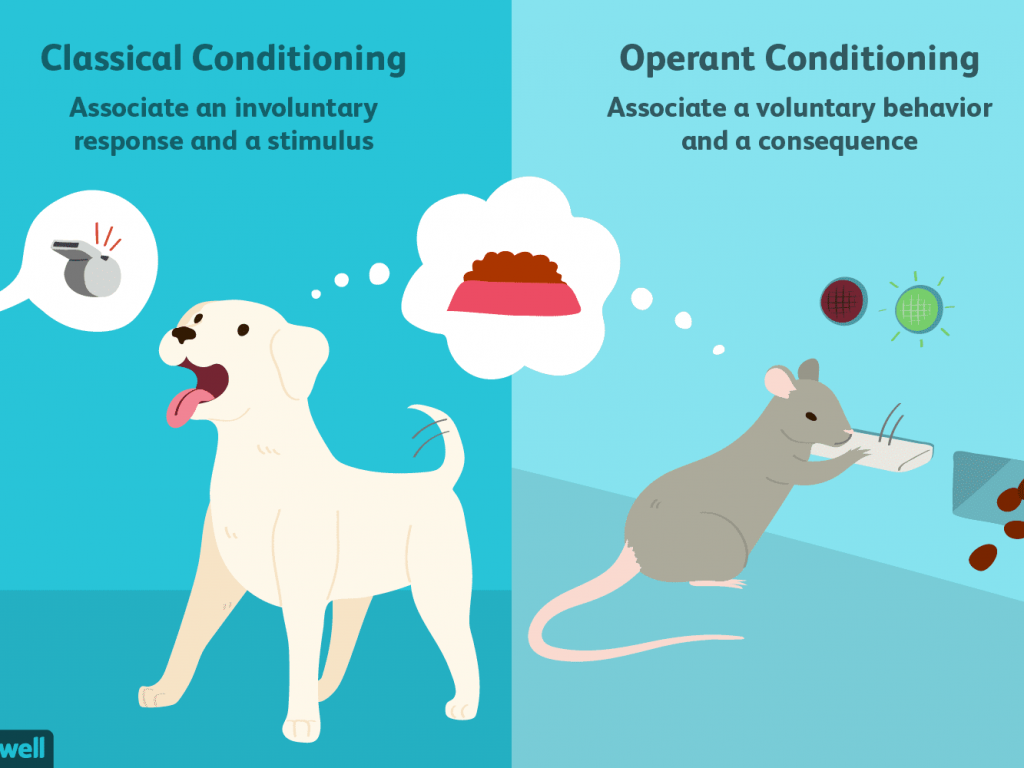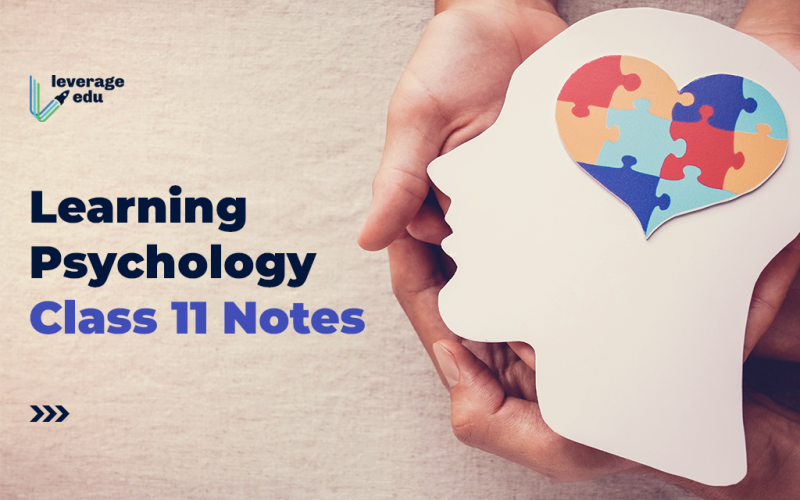The scope of psychology is wide and bright. More students from all around the world are ready to build a career in psychology. It all starts with selecting psychology in class 11 as a subject. Class 11 Psychology is a scoring subject if students prepared well. Notes help in better understanding of the concept, preparation, and quick revision of all topics. Here is an important chapter from psychology class 11 in CBSE. Read the blog on Learning Class 11 Psychology Notes.
Also Read : Psychology Class 11 CBSE Syllabus
Table of contents
- What is Learning?
- Classical Conditioning – Form of Learning
- Operant Conditioning – Form of Learning
- New Stimuli
- Process of Unlearning
- Imitation
- Verbal Learning
- What is a Concept?
- Skills and Transfer of Learning
- Factors Facilitating Learning
- Learning Disability
- What is a Learning Curve?
- Learning Class 11 Psychology PDF
- Class 11 Psychology NCERT Solutions
What is Learning?
The first topic of Learning Class 11 Psychology Notes is Leaning. In simple terms, learning can be defined as “any relatively permanent change in behavior or in the potential for behavior brought about through experience.” Learning can be distinguished from other modes of changes in behavior that might be due to maturation or evolution. Learning is a sequential process that is significantly different from performance as performance is a person’s observed behavior that guarantees to learn while learning never guarantees performance.
Also Read : Human Development Class 11 Notes
Classical Conditioning – Form of Learning
- It is a previously learned stimulus. Conditioned Stimulus (CS) is paired with an unconditioned stimulus to elicit an unconditioned response(UCR). Resultantly, the CS comes to elicit a conditioned response that is similar to the UCR
- Classical conditioning occurs because of the association in time of a neutral stimulus that already elicits the response. The CS becomes a signal that predicts the occurrence of the UCS
Also Read : Methods of Enquiry in Psychology
Operant Conditioning – Form of Learning
This is a form of learning in which consequences of behavior lead to changes in the probability of its occurrence:
In Positive Reinforcement – An increase in the probability of the occurrence of response is caused due to a positive consequence of behavior.
- Primary reinforcers are innately reinforcing
- Secondary reinforcers are learned through classical conditioning
- Fixed ratio, variable ratio, fixed interval, and variable interval are the four different schedules of reinforcement that result in different patterns of behavior
- Shaping is the process of positively reinforcing responses that are progressively more similar to the response that is wanted
Negative Reinforcement – It occurs when avoidance or removal of a negative event is the reinforcing consequence.
Punishment – A process in which the frequency of the behavior is reduced through an aversive consequence of behavior.

Also Read : 100 Psychology Facts You Must Know!
New Stimuli
- New stimuli influence behavior through the process of learning
- It is said that stimulus discrimination has been learned when a response is more likely to occur in the presence of a specific stimulus
- Stimulus generalization occurs when an individual responds in the same way to a stimulus that is similar to the original stimulus
Also Read : Career in Psychology [The Only 2021 Study Guide You Need]
Process of Unlearning
Extinction in this respect is defined as the removal of an aspect of the environment that originally caused the learning and hence calls for the unlearning of the learned response. Extinction is often slowed down because of spontaneous recovery and external disinheriting.
Imitation
This concept is based on Bandura’s Social learning theory. Imitation is another form of learning. It is also known as observational learning. The reinforcement provided by parents when their children imitate grown-up actions ensures that children acquire many aspects of behavior in this way. It is also known as modeling. In modeling, somebody observes another and then attempts to imitate their behavior.
Also Read : Must Watch Movies on Psychology
Verbal Learning
Learning about objects and events in terms of words is called Verbal Learning. It can be done through a method of paired-associate learning, serial learning, and free recall. The main determinants of verbal learning are:
- Meaningfulness of the material time devoted to learning
- Category clustering means the subjective organization is the main determinant of verbal learning
What is a Concept?
Learning occurs in the form of concept, i.e., in terms of category. A concept involves a set of features connected with a rule or instruction. Concepts are of two types – natural or artificial.
- Natural concepts are those that are ill-defined and difficult to learn
- Artificial concepts on the other hand are those that are well defined and easy to learn
Also Read : Top 10 Psychology Colleges in India
Skills and Transfer of Learning
In simple terms, as well all may know skills can be defined as the ability to perform a task with precision and ease by an individual. As the phrase suggests, transfer of learning is the way through which one can transfer learned skills from one situation to another related situation. Skills are acquired through the following stages:
- Cognitive
- Associative
- Autonomous
Factors Facilitating Learning
The learner’s performance is influenced by their cognitive style which refers to a learner’s consistent way of responding to and using stimuli in the context of learning. There are three major factors facilitating learning. Here are the names of all three:
- Motivation
- Preparedness of the Learner
- Reinforcement

Learning Disability
These disabilities are mostly inherited or neurologically determined and can be defined as “a heterogeneous group of disorders which are manifested in terms of difficulty in the acquisition of learning, reading, writing, speaking, reasoning and mathematical activities.”
What is a Learning Curve?
Psychologists often disagree on whether learning results from neural connections between specific stimuli and specific responses or is a change in cognition. Research work that supports the cognitive view includes Tolman’s studies of place learning and latent learning, Kohler’s studies of insight learning, and Bandura’s work on modeling. Here is a step-wise explanation of the learning curve:
- It is a graphical representation
- The graph represents the relation between the observed changes in the performance and the duration of the learning experience
- In the learning curve, the units of practice/trials are depicted on the horizontal axis
- While the degree of learning is measured in terms of a number of errors, correct responses, time is taken, etc. are depicted on the vertical axis
Learning Class 11 Psychology PDF
Class 11 Psychology NCERT Solutions
Let’s answer a few NCERT questions to check your progress
- What is learning? What are its distinguishing features?
Ans: In simple terms, learning can be defined as “any relatively permanent change in behavior or in the potential for behavior brought about through experience.” Learning can be distinguished from other modes of changes in behavior that might be due to maturation or evolution. Learning is a sequential process that is significantly different from performance as performance is a person’s observed behavior that guarantees to learn while learning never guarantees performance.
- Define operant conditioning. Discuss the factors that influence the course of operant conditioning.
Ans: This is a form of learning in which consequences of behavior lead to changes in the probability of its occurrence.
In Positive Reinforcement – An increase in the probability of the occurrence of response is caused due to a positive consequence of behavior.
- Primary reinforcers are innately reinforcing
- Secondary reinforcers are learned through classical conditioning
- Fixed ratio, variable ratio, fixed interval, and variable interval are the four different schedules of reinforcement that result in different patterns of behavior
- Shaping is the process of positively reinforcing responses that are progressively more similar to the response that is wanted
Negative Reinforcement – Occurs when avoidance or removal of a negative event is the reinforcing consequence.
Punishment – A process in which the frequency of the behavior is reduced through an aversive consequence of behavior.
So, this was all about Learning CBSE Class 11 Psychology Notes. We hope you found this to be useful in preparing for your exams. For the latest updates around study blogs, you can follow us on Instagram, Twitter, Facebook and also subscribe to our newsletter. You can also join our Leverage Edu Community. Leverage Edu wishes you all the best for all your future endeavors.

 One app for all your study abroad needs
One app for all your study abroad needs





















 45,000+ students realised their study abroad dream with us. Take the first step today.
45,000+ students realised their study abroad dream with us. Take the first step today.

